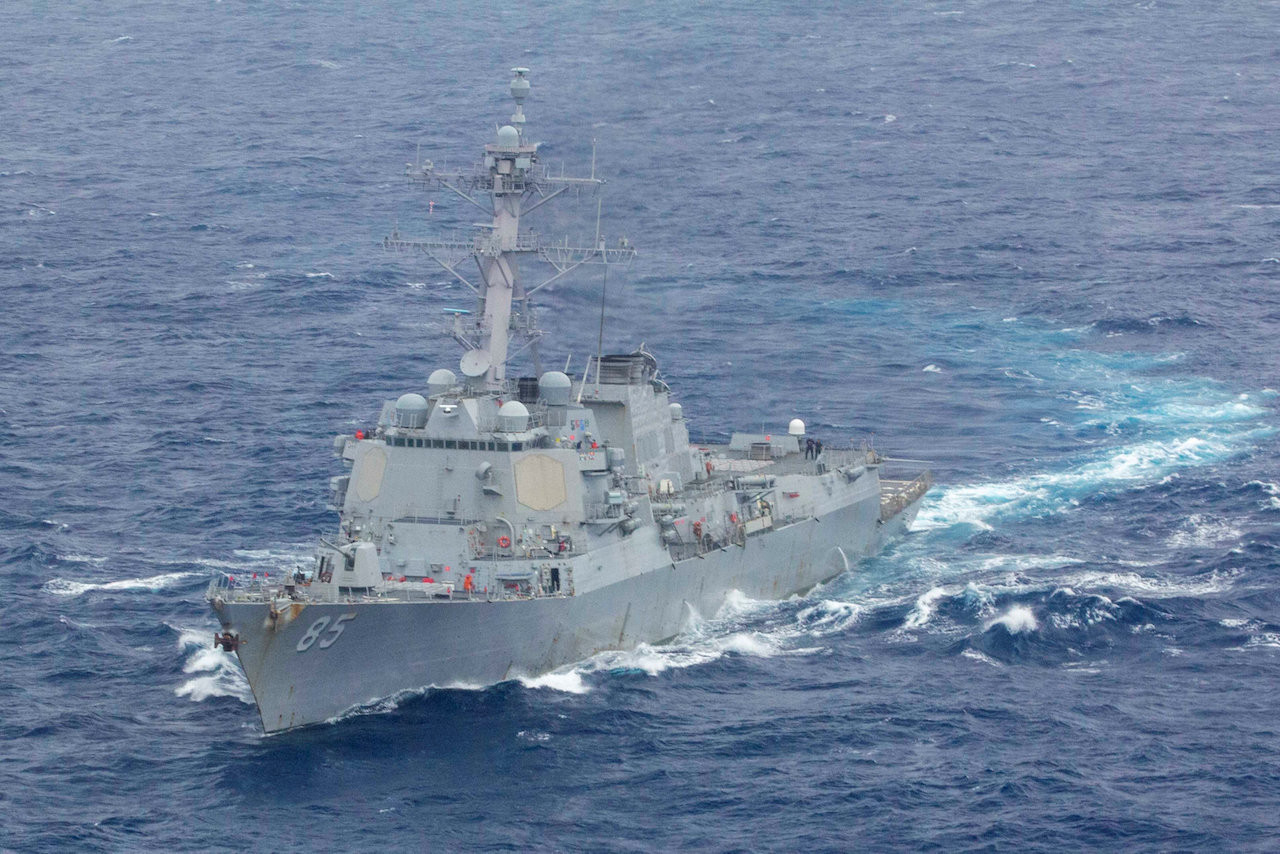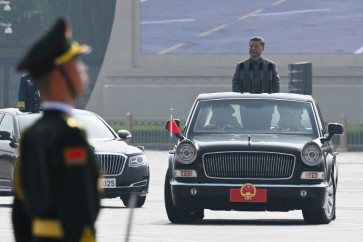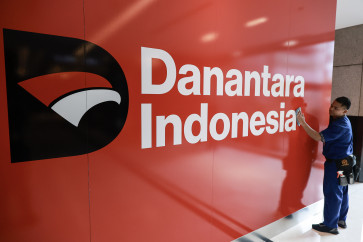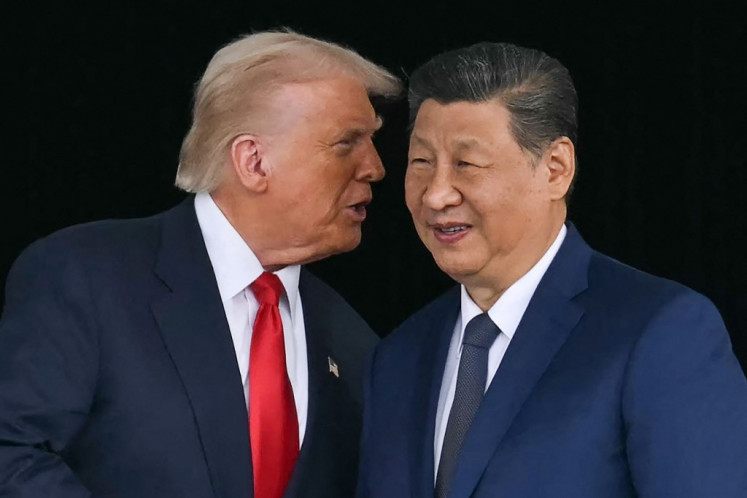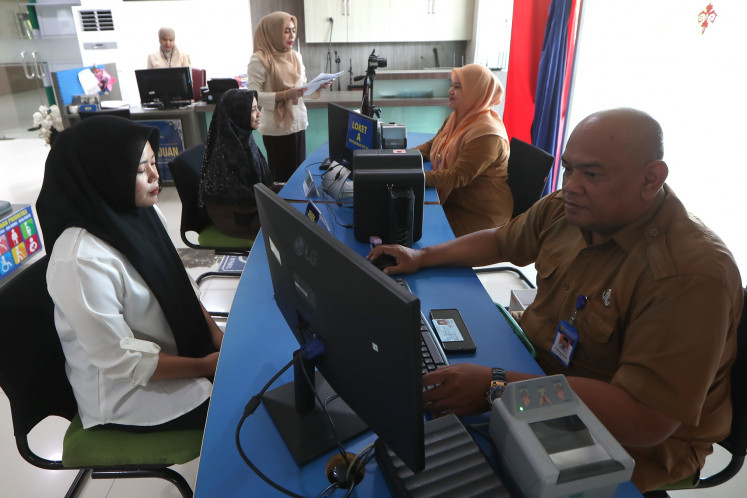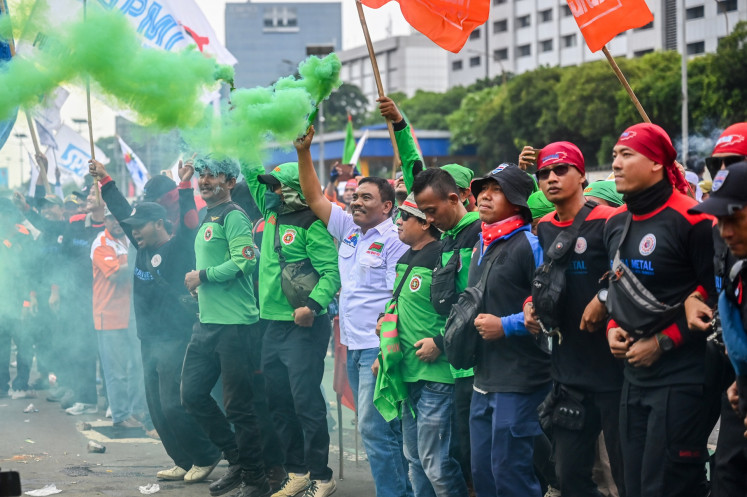Popular Reads
Top Results
Can't find what you're looking for?
View all search resultsPopular Reads
Top Results
Can't find what you're looking for?
View all search resultsIndonesia’s strategic defense concept in Indo-Pacific region
Its proximity to one of the main conflict flashpoints in the Indo-Pacific region, namely the South China Sea (SCS), leaves Indonesia prone to spill-over effects arising from possible incidents and conflicts in the region.
Change text size
Gift Premium Articles
to Anyone
T
he Total People’s Defense and Security System (Sishankamrata) is a mandate of the 1945 Constitution specifically Article 30 paragraph 2, which states that “The defense and security of the state is undertaken through a total people’s defense and security system with the Indonesian Military and the Indonesian National Police the main elements of force, and the entire people as the supporting element.” This implies that Sishankamrata is based on the mobilization of all national resources, namely the armed forces and the people, to defend Indonesia from any threats and to advance its national interests.
Sishankamrata draws its roots from three core values, namely kerakyatan (people-centered), kewilayahan (territorial-based) and kesemestaan (totality). The value of “people-centered” places the importance of people at the heart of national defense; the value of “territorial-based” emphasizes the preparedness of a self-reliant territorial defense posture in accordance with the distinct features of each territory; while the value of “totality” underscores the integration and unity of efforts across all national defense components in defending the nation-state against any military, nonmilitary or hybrid threats.
The three core values of Sishankamrata are operationalized through a layered-defense and defense-in-depth strategy that is based on the Mandala, or concentric circle, concept, where the innermost circle comprises Indonesia’s land territories up to the territorial sea; the inner circle spans from the territorial sea up to the exclusive economic zone (EEZ); and the outermost circle is the territory beyond the EEZ. These ideas place Sishankamrata as a strategic defense concept that shapes how Indonesia mobilizes its national resources to achieve its national defense and security objectives in a given strategic environment, especially the 21st century Indo-Pacific regional dynamics.
The 21st century Indo-Pacific regional construct is characterized by the confluence of various countries’ interests. In general, the building of the Indo-Pacific region reflects the growing intensity of interaction and connectedness between people, government and business in the 21st century that are facilitated by the Indian and Pacific Oceans.
The region is home to two-fifths of the global population and accounts for one-third of the world’s gross domestic product and global trade values. It also has a wealth of natural resources and strategic sea communication lines that serve as global traffic routes for people and goods.
This reality underlies the pattern of competition and cooperation between countries in the region. Besides the intensified cooperation in the region that aims to promote common prosperity, there are several unresolved territorial disputes that might become conflict flashpoints.
Furthermore, the rise of China, which is followed by the expansion in its ambition and influence in the region, raises many countries’ concerns about the threats it poses to their interests in the Indo-Pacific, especially the freedom of navigation in several strategic sea-communication lines.
This competition tends to escalate in a worrying trajectory that potentially leads to open conflicts. This year, China passed the Chinese Coast Guard (CCG) Law that allows the CCG to use weapons against foreign entities or individuals that violate China's sovereign rights and jurisdiction at sea; and revised its Maritime Traffic Safety Law, which requires any foreign ships entering China's territorial waters to report ship and cargo information to Chinese maritime authorities.
Meanwhile, in September, Australia, the United States and the United Kingdom announced a pact called AUKUS that started with the acquisition of eight nuclear-powered submarines by Australia, an effort claimed to protect freedom of navigation in the region.
Given its strategic position between the Indian and Pacific Oceans, Indonesia has a very significant interest and strategic role in shaping the Indo-Pacific region. Its proximity to one of the main conflict flashpoints in the Indo-Pacific region, namely the South China Sea (SCS), leaves Indonesia prone to spill-over effects arising from possible incidents and conflicts in the region. To safeguard its interests, Indonesia must be able to steer through multiple reefs, namely to navigate its strategic course and exercise its role in ensuring a stable, secure and peaceful Indo-Pacific region amid the conflicting interests of countries in the region.
In the diplomatic realm, Indonesia has demonstrated its strategic role in regional norms-building and cooperation development through ASEAN by initiating the ASEAN Outlook on Indo-Pacific (AOIP), which elevates ASEAN's central role in forging constructive and inclusive cooperation, as well as bridging differences in the regional constructs and conflicting interests among countries in the region.
In general, the AOIP has been welcomed by countries within and beyond the region. However, it remains insufficient to maintain regional stability, security and peace as reflected in the conflict trajectory among countries in the region that keeps escalating.
As a strategic defense concept, Sishankamrata has to remain relevant and suited to deal with the volatile, uncertain, complex and ambiguous nature of the strategic environment, while contributing to the advancement of Indonesia’s national interests. Given Indonesia’s national interests and strategic roles in the Indo-Pacific region, the enduring core values of Sishankamrata operationalized through a layered-defense and defense-in-depth strategy are deemed suitable and relevant for Indonesia to navigate its strategic course in responding to the uncertain regional situation.
Possible conflicts in the SCS or other flashpoints are likely to involve scenarios where the conflicting military forces traverse to the flashpoints through Indonesia’s waters. In this context, Sishankamrata could be derived into an anti-access/area denial (A2/AD) defense posture, which comprise a set of defensive capabilities aimed at preventing any conflicting countries from deploying their force and traversing to the conflict flashpoints in the region through Indonesia’s territory. Thus, opting for an A2/AD defense posture development based on the Sishankamrata concept will complement and support Indonesia’s diplomatic measures to further advance its interests in ensuring stability, security and peace in the Indo-Pacific region.
Amid the military technology disruption that has transformed warfare’s characteristics to become increasingly nonlinear, an A2/AD defense posture development under the framework of Sishankamrata requires adequate technological support. Indonesia needs to develop an integrated three-service defense capability under the foundation of network-centric warfare capability, which consists of a command, control, computer, communication, intelligence, surveillance and reconnaissance (C4ISR) system that is integrated in real-time with an integrated fleet weapons system, air defense system, combat aircraft, land defense system and a highly durable and integrated defense logistics system.
At the technological heart of this Sishankamrata-based defense posture is the ownership of a national defense satellite to ensure that Indonesia has a reliable and resilient information and communication backbone for national defense capability-integration purposes with a high level of resistance against various vulnerabilities in the information domain.
Such an A2/AD defense posture reflects the core values of Sishankamrata as Indonesia’s strategic defense concept, which emphasizes the mobilization of all national resources in an integrated manner through a layered defense and defense-in-depth strategy to safeguard its national interests amid the 21st century regional situation.
By doing so, Indonesia will demonstrate a suitable level of power and generate the influence it requires to steer between multiple reefs in the Indo-Pacific region’s strategic uncertainties.
***
The writer is doctoral student at Indonesia Defense University.

